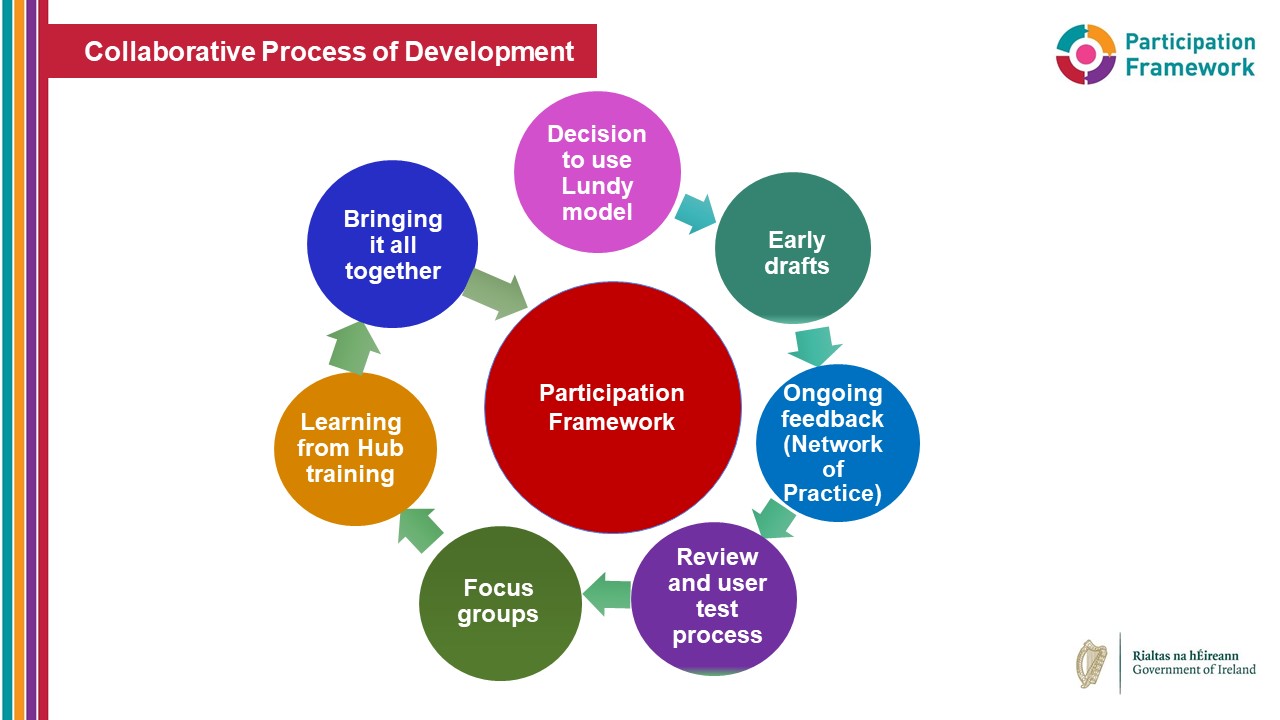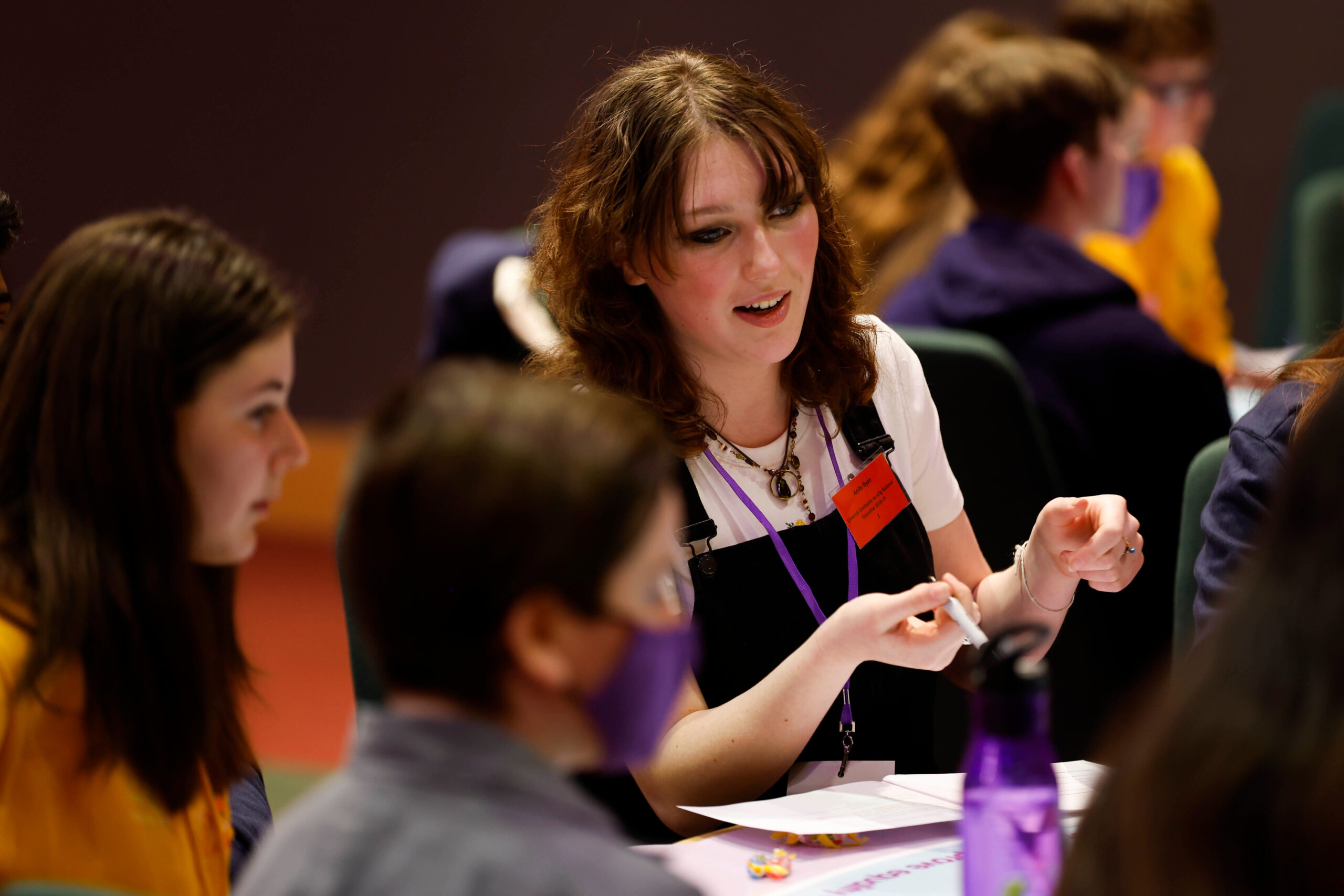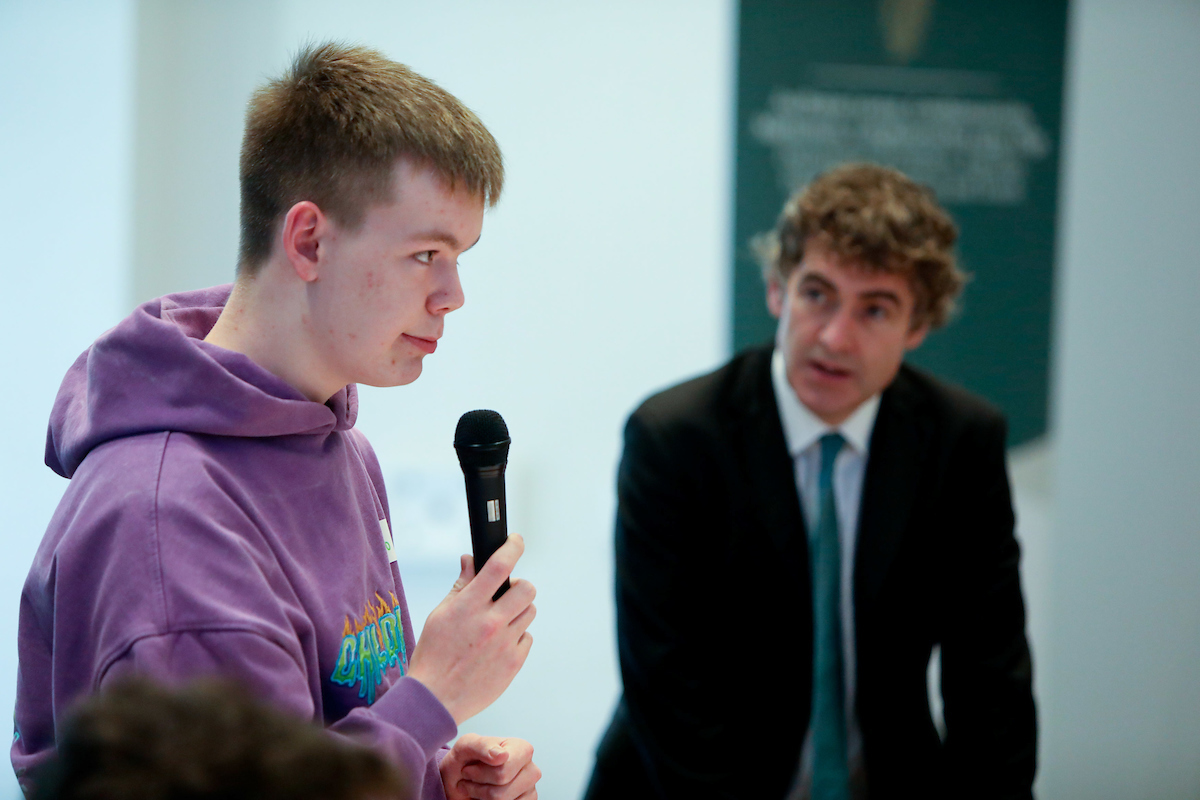Training
Hub na nÓg supports children and young people’s participation in decision-making by supporting government departments/agencies and state bodies and non-statutory organisations through the targeted provision of training and development
Training Overview
The training provided encompasses theoretical learning, planning skills, and practical skills, centred on a child rights approach to involving children and young people in decision-making in line with the UN Convention on the Rights of the Child (UNCRC) and measures in the UN Convention on People with Disabilities (UNCPD) regarding the voice of the child. Our training supports organisations to involve children and young people in decision-making in all aspects of their policy, planning, practice, services, and culture.
How to Request Training Support:
- Government Departments/Agencies and State Bodies: Direct application to Hub na nÓg via email at hubnanog@equality.gov.ie. Please provide full details of the Government Department/Agency, or State Body you are representing and we will arrange a meeting with you to discuss further details.
- Non-statutory Organisations: Applications may be made through the Capacity Building Grant only. View the full list of 2021 grantees today.
- For all other enquiries, please contact hubnanog@equality.gov.ie.

Training Design
Hub na nÓg training and development design is based on a Training Needs Analysis (TNA) process conducted with the client who requests training or development.
Step 1: Initial Meeting Between Hub na nÓg and Client Organisation
Hub na nÓg training team will gather information from the client on the following:
- reason for seeking training
- current practice in the organisation,
- intended improvements the client wishes to make in giving children and young people a voice in decision-making.
Determine the role of the client and role of Hub na nÓg in the development of:
- the training programme,
- manual and materials,
- timeframe for the programme development and delivery
Step 2: Development and Review of the Training Needs Analysis (TNA) Form:
- Hub na nÓg issues the TNA form to the client for them to complete.
The TNA form covers:
- the number of participants, their roles, and their responsibilities;
- the client’s current policies and practices in giving children and young people a voice in decision making;
- policies and plans under development for the coming year; and
- the client’s training, development, and coaching needs.
- A meeting is then scheduled between Hub na nÓg and the client to review the TNA form.
Step 3: Development and Sign-off of Final Training and Learning Objectives and Training Tasks:
- Based on the TNA form, Hub na nÓg develops the final training and learning objectives, determines the number of trainers required, the delivery method (online/in-person/blended), estimated costs, dates and locations, and deadlines for the development of the training programme, manual and materials.
- The client reviews and signs off on the above.
- Hub na nÓg provides the client with an online registration form for them to circulate to participants within their organisation.
Step 4: Development of Training Programme, Materials and Manual and Arrangement of Training Logistics:
- Hub na nÓg retains trainers to deliver the training and works with them to develop the training methods and tasks, finalise the content and flow of the programme, assign responsibilities to trainers, and develop the training manual and presentation.
- Hub na nÓg books the venue and catering, and designs and arranges the printing of all training materials.
- Hub na nÓg ensures that the presentations cover national and international child rights obligations, best practice, and practice methods, which are tailored to the obligations, responsibilities, and needs of the client’s organisation.
Training Delivery
Hub na nÓg training and development is comprised of theoretical, planning, practice, and guidance sessions
All Hub na nÓg training programmes include 2 core theoretical sessions:
- National and International Child Rights Obligations With Reference to the Voice of the Child.
- A presentation tailored to the needs and child rights obligations of the client organisation.
- A training task that requires participants to demonstrate their ability to describe the child rights obligations of their organisation in giving children and young people in decision-making.
- The National Participation Framework:
- A presentation tailored to the needs of the client organisation, which outlines the Lundy Model and the National Participation Framework.
- A training task that requires participants to use the Framework guidance and Planning Checklist to start the process of developing a plan on how they will adopt a rights-based approach to involving children and young people in decision-making in a specific project/s being undertaken by the organisation.

All Hub na nÓg training programmes include practice sessions that require participants to demonstrate their ability to use best practice and age-appropriate methods to seek the views of children and young people.
Individual training programmes are tailored to the role, responsibilities, and needs of client organisations and to how ready they are to involve children and/or young people in decision making.
Watch a video on some of the participation methods used to seek the views of children and young people.

Guidance sessions are conducted on:
- The importance of conducting evaluation of all child and youth participation initiatives. A number of simple child-friendly evaluation tools are included in training manuals, where appropriate.
- The importance of providing feedback to children and young people, with examples of good practice.
- The appropriate use of the National Participation Framework checklists and child/youth feedback forms.

Hub na nÓg offers dedicated time and space for follow-up coaching and mentoring to organisations and individuals who have attended preliminary training. This support is delivered in the following ways:
- Co-design (between the client organisation and the Hub) of methodologies to conduct consultations, work on specific projects with advisory groups, or improve existing approaches to seeking the views of children and/or young people.
- Practice workshops to coach client organisations and individuals in developing the skills to use co-designed methodologies or Hub na nÓg methodologies.
- Sharing existing Hub na nÓg and other good practice tools.
- Developing good practice tools with client organisations.
- Providing face-to-face, telephone, and email support and guidance.
